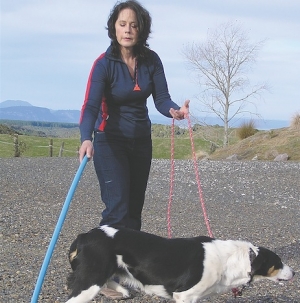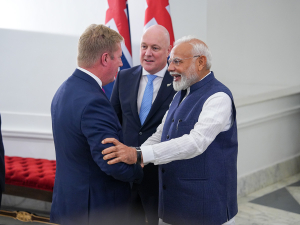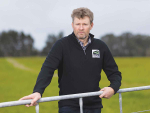A couple of people who had watched a DVD about dog training remarked to me that the dogs looked scared of the trainer. I hadn’t seen it so couldn’t comment however I have since seen the DVD and I don’t think the dogs are scared.
Also, at my training days, I have had people remark that the dogs I am demonstrating with have their tails between their legs. It seems to concern the person more than the dog. Why?
The people making the comments aren’t reading the dogs’ postures and the situations correctly, and they don’t understand dog behaviour fully. People assume that if a dog has its tail between its legs that it is scared or terrified. This isn’t the case.
Let me explain: if you watch a small pup approach a mature dog you will see that it appears uncertain, a little nervous and very cautious. The head is lowered, the ears are lowered, the eyes are wary, the body is lowered – sometimes to the extent of a crawl - and the tail is tucked between the legs. The pup is uncertain, but not terrified.
Dogs, and other animals, do not approach something they are terrified of, they hide or flee.
As the pup matures the behaviour is less extreme but it still approaches older more dominant pack members with submission; yes the tail indicates emotions but so too does body posture and facial expression – it’s a package.
Cocky, arrogant, challenging or playful stances all look somewhat similar but have subtle differences; nevertheless the head is carried high, the ears appear higher, the eyes are bright and challenging and the tail is held high, often curving over the back.
A happy relaxed dog looks just that: his head is neither too high, nor low; the ears are in a comfortable position; the eyes are relaxed; the body is without tension; the tail either hanging down or held gently out; the dog looks comfortable and at ease.
If you are training a dog and it is running loose with sheep you will notice from its body language how it is feeling; it may be relaxed and confident, nervous and unsure, playful or aggressive.
I do a lot of training initially with dogs on a rope, and I have a training stick. The rope is to control the dog and have contact with it. The stick is used to praise (by stroking) and guide the dog when teaching commands. The stick never punishes; the most it does is tap the dog.
In the early stages of training I want to see the dog looking uncertain: it means respect and submission. If the dog’s head was up, the eyes bright and playful, or challenging, and the tail held in a cocky position I’d have trouble on my hands. Training isn’t a game, nor am I to be challenged.
As each lesson progresses the dog begins to understand, and the tail will relax along with facial expression.
If you are training a dog and the tail is high and the eyes are bright, it is all a game to the dog. You’re probably not respected, or in control.
• Anna Holland is teaching people dog training. For more information www.annaholland.co.nz or ph 07-217 0101 or annaholland@xtra>

















